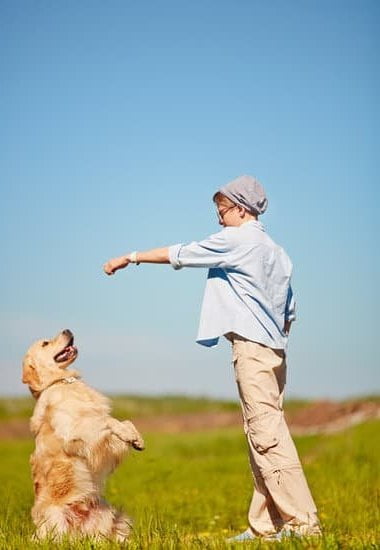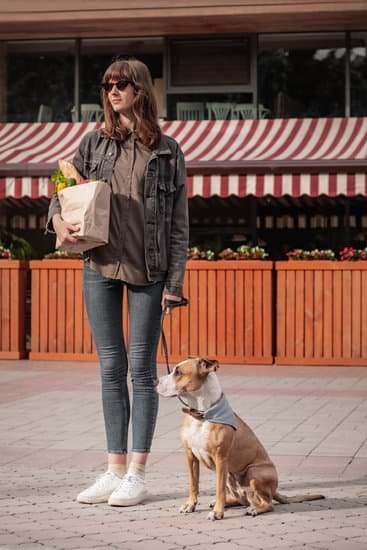Potty training a dog can be a challenging undertaking, but what about potty training a second dog? In this article, we will explore the common issues faced when potty training a second dog and delve into the question: is it easier or more difficult compared to the first dog?
When potty training a second dog, familiarity with the housebreaking process can be a significant advantage. Having experience in housebreaking the first dog allows for a better understanding of signs and cues that indicate when the second dog needs to go outside. This previous knowledge can help streamline the training process and make it easier to establish a consistent routine.
Building on an established routine and environment is another benefit when potty training a second dog. With the first dog already accustomed to specific potty areas and having a set schedule, the second dog can observe and learn from these habits. Pack dynamics come into play here, as the second dog may naturally follow and imitate the behavior of the first dog.
While there are advantages to potty training a second dog, it’s essential to recognize that there may also be unique challenges and setbacks. Issues such as territorial marking, competition between dogs, or regression in previously trained behaviors may arise. Understanding these potential obstacles is crucial in navigating through them effectively.
Throughout this article, we will explore various aspects of potty training a second dog, including tips for avoiding past mistakes made during the process with the first dog. Additionally, we will discuss how individual differences and personalities play a role in training success and offer strategies to maintain consistency and patience throughout the journey.
By analyzing both advantages and challenges, we aim to provide balanced insights into whether it truly is easier to potty train a second dog than it was with the first one. So let’s dive into this exploration of dual-dog housebreaking.
Familiarity with the Housebreaking Process
When it comes to potty training a second dog, one advantage that pet owners have is their familiarity with the housebreaking process. Having experience in housebreaking the first dog can greatly benefit the training journey with the second dog. The knowledge gained from training the first dog allows owners to understand the signs and cues that indicate when their dogs need to go outside.
One of the key benefits of being familiar with the housebreaking process is knowing how to establish a routine for bathroom breaks. Owners can build on their established routine and designated potty areas within the household when introducing a second dog. This not only helps create consistency but also provides a sense of structure and predictability for both dogs. By already having a routine in place, owners can anticipate their dogs’ needs more effectively and reduce accidents inside the house.
Additionally, having experience in potty training allows owners to recognize and interpret their second dog’s body language or behavior patterns more accurately. They may observe similarities between their first and second dogs when it comes to signaling their need to go outside. Understanding these signs becomes easier, making it quicker to respond and avoid accidents.
To make use of this familiarity with the housebreaking process, it is important for owners to maintain consistency in their training approach. Using positive reinforcement techniques that have worked effectively in the past can help reinforce desired behaviors in both dogs. By building upon previous success, owners can expedite the potty training process for their second dog.
Overall, familiarity with the housebreaking process undoubtedly simplifies potty training a second dog. It allows owners to leverage previous knowledge about establishing routines, interpreting signals from their dogs, and implementing successful training techniques. Nevertheless, it is crucial to remember that each dog is unique, and there may still be individual differences or challenges that arise during this process.
Building on Established Routine and Environment
When potty training a second dog, one advantage is the ability to build on an already established routine and environment. This can make the process smoother and more efficient compared to training a first dog. Here are some key points to consider when building on an established routine and environment:
- Consistency is Key: With a second dog, you likely already have a set routine in place for outdoor bathroom breaks. This routine can be easily transferred to the new dog, making them aware of when and where they should go potty. By sticking to a consistent schedule, you create a sense of structure and predictability for both dogs.
- Designated Potty Areas: Having designated areas within your household specifically for potty breaks can be incredibly helpful when training a second dog. The new dog can observe the first dog using these areas, reinforcing the idea that this is the appropriate spot for elimination. Consider using visual cues such as pee pads or fake grass patches to help guide your new pup.
- Learning from Observation: Dogs are highly social animals and often learn by observing others. When potty training a second dog, their natural inclination to imitate behaviors can work in your favor. Your new pup may pick up on cues from your first dog, such as sniffing around before going outside or waiting patiently at the door when they need to go out.
To take full advantage of an established routine and environment, it’s important to ensure that both dogs have access to their designated areas whenever needed. Monitor their behavior during potty breaks and provide positive reinforcement when they use the correct spots. Additionally, be prepared for accidents as the new pup adjusts to their surroundings and familiarizes themselves with the routine.
By building on an established routine and environment, you can facilitate successful potty training with your second dog while minimizing confusion and setbacks. Remember to remain patient, consistent, and supportive throughout the process as each dog learns at their own pace.
Learning from the First Dog’s Mistakes
When potty training a second dog, one of the significant advantages is the opportunity to learn from the mistakes made during the process with the first dog. The learning curve observed with the initial training experience can be immensely beneficial in avoiding past pitfalls and optimizing the training journey for the second dog.
One key aspect to consider when reflecting on the first dog’s potty training experience is identifying any common mistakes or challenges that occurred. This could include issues such as inconsistent reinforcement, not recognizing early signs and cues of needing to go outside, or insufficient supervision. By acknowledging these mistakes, you can make a conscious effort to rectify them while training your second dog.
To ensure successful potty training with your second dog, it is essential to establish a consistent routine from the beginning. Reflecting on any inconsistencies in your previous routine and making necessary adjustments can significantly improve your chances of success. Additionally, being more vigilant in supervising your second dog’s behavior can prevent accidents and reinforce positive habits.
Another valuable lesson learned from the first dog’s potty training journey is understanding individual differences and needs. Every dog is unique and may respond differently to certain training methods or cues. Take note of what worked well for your first dog and adapt those techniques accordingly for your second dog. Pay attention to their personality traits and adjust your approach based on their specific needs.
Overall, by learning from the first dog’s mistakes, you can optimize the potty training process for your second dog. The knowledge gained through previous experiences allows you to avoid common pitfalls, establish a consistent routine, and adapt techniques based on individual differences. With patience and consistency, potty training a second dog can be an easier and more efficient process.
Taking Advantage of Pack Dynamics
How Pack Dynamics Play a Role in Potty Training
When it comes to potty training a second dog, one advantage to keep in mind is the influence of pack dynamics. Dogs are social animals, and they have a strong tendency to imitate the behaviors of their pack members. This includes bathroom habits. When you already have a well-trained dog in the household, their established potty routine can serve as a valuable teaching tool for the new addition.
Dogs learn by observing and mimicking the actions of others, especially those within their own pack. By watching the first dog go through the potty training process and seeing how they behave when it’s time to relieve themselves outside, the second dog can quickly catch on and follow suit. This observational learning can significantly speed up the potty training process for your second dog.
Pack Leadership and Establishing Routine
Pack dynamics also play a role in establishing routine and hierarchy within your household. When you bring home a second dog, they will naturally look to your first dog as an example of how things work in their new environment. If your first dog has already been successfully trained to go outside for potty breaks, the second dog will likely follow their lead. This helps reinforce consistency and establishes a clear structure for both dogs.
As the pack leader, it’s crucial to ensure that both dogs are given equal attention during this process. Both dogs should be taken outside together for potty breaks, allowing them to establish a shared routine. By doing so, you strengthen their bond and avoid any potential rivalry or competition over bathroom privileges.
Maintaining Consistency Across Multiple Dogs
While taking advantage of pack dynamics can be beneficial during potty training, it’s essential to maintain consistency across all your dogs’ routines. Each individual should still be given separate praise and rewards for successfully using designated outdoor areas for elimination. This helps reinforce the behavior in each dog and allows them to understand the expectations independently.
Additionally, it’s important to remember that dogs have their own unique personalities and learning styles. While one dog may quickly catch on to potty training through observing their pack mate, another dog may require more time and individualized attention. Adapting your training techniques based on each dog’s needs will ensure a successful potty training experience for all involved.
Overall, taking advantage of pack dynamics can make potty training a second dog easier in many cases. However, it’s essential to consider the individual needs and personalities of both dogs throughout the process. By maintaining consistency, patience, and adapting as necessary, you can successfully potty train your second dog while strengthening the bond between your furry companions.
Possible Setbacks and Challenges Unique to Second Dog Training
Territorial Marking
When potty training a second dog, one of the unique challenges that may arise is territorial marking. Dogs have a natural instinct to mark their territory, and when there is already an established dog in the household, the second dog may feel compelled to mark their own territory as well.
This can lead to accidents inside the house, even if the second dog has been successfully trained before. To address this issue, it is important to closely monitor both dogs during the initial stages of potty training and reinforce positive behaviors outside designated potty areas.
Competition
Another challenge that can occur when potty training a second dog is competition between the two dogs. Dogs are often motivated by dominance and hierarchy within a pack, and this can extend to their potty routines as well. The second dog may try to compete with or outdo the first dog’s potty habits in order to establish their own dominance.
This can result in accidents or regression in previously learned behaviors. It is crucial for pet owners to provide each dog with ample opportunities for success and ensure they receive equal attention and rewards during the training process.
Regression
Regression in potty training can also be a setback when introducing a second dog into the household. The presence of a new companion may disrupt the established routine for both dogs, causing them to forget or become lax about their housebreaking habits.
It is important for pet owners to reinforce consistency in routine and remind both dogs of expected behaviors through positive reinforcement techniques. Additionally, increasing supervision during this time can help prevent accidents or any negative associations with potty training.
Overall, while there are unique challenges that come with potty training a second dog, these setbacks can be overcome with patience and diligent training methods. Understanding and addressing territorial marking tendencies, managing competition between dogs, and preventing regression through consistent reinforcement will help ensure a smooth potty training process for both dogs. By recognizing and preparing for these challenges, pet owners can successfully housebreak their second dog and create a harmonious environment within the household.
Individual Differences and Personalities
When potty training a second dog, it is important to consider the individual differences and personalities of each dog. Just like humans, dogs have their own unique traits and characteristics that can greatly influence the training process. Understanding these differences and adapting your training techniques accordingly can be crucial in successfully potty training your second dog.
Firstly, it is important to recognize that each dog has their own learning style. Some dogs may be more eager to please and quick to learn, while others may be more independent or stubborn. Tailoring your approach based on your second dog’s personality can make a significant difference in their ability to grasp potty training concepts.
For example, if you have a highly motivated dog, incorporating positive reinforcement such as treats or praise may be very effective. On the other hand, if you have a more aloof or independent dog, finding alternative methods of motivation such as using their favorite toy as a reward might work better.
Additionally, each dog may have varying levels of confidence or anxiety when it comes to new experiences or changes in routine. This can impact their willingness to adapt to the potty training process. For example, a shy or anxious dog may require extra patience and reassurance during this time. Creating a calm and supportive environment can help them feel more at ease and enhance their ability to learn.
Lastly, considering the previous experiences and history of your second dog is also crucial in understanding their individual needs during potty training. If they have had any negative associations with toileting in the past, they may require additional time and positive reinforcement to overcome these fears or anxieties.
Maintaining Consistency and Patience
When it comes to potty training a second dog, one of the most crucial factors for success is maintaining consistency and patience throughout the process. Consistency is key to reinforcing good habits and helping the dog understand the desired behavior.
Patience, on the other hand, allows for understanding that accidents may happen and that progress takes time. In this section, we will explore the significance of consistency and patience in potty training a second dog and provide helpful strategies to ensure a smooth training journey.
Consistency in potty training involves establishing a routine for your second dog that includes regular potty breaks, designated potty areas, and consistent commands or cues. By following a consistent routine, your dog will start associating certain cues with going to the bathroom outside.
This can be particularly beneficial when you have already established a routine during the housebreaking process of your first dog. The familiarity with the routine can help both dogs understand what is expected of them and reduce confusion or accidents.
Another important aspect of consistency is being consistent with positive reinforcement. Rewarding your second dog with treats or praise when they go to the bathroom outside reinforces their good behavior and helps them understand what you expect from them. Conversely, it is important not to punish accidents but rather redirect their behavior towards appropriate areas.
Patience is equally important when potty training a second dog. Each dog has their own learning pace, and some may catch on quickly while others may take more time. It is essential to remember that accidents are part of the learning process, especially when introducing new routines or environments to your second dog. Staying patient and gentle will foster trust between you and your furry friend during this training journey.
To maintain consistency and patience effectively during potty training:
- Stick to a regular schedule: Establish fixed times for meals, walks, and potty breaks.
- Use consistent cues: Use specific phrases or words consistently when taking your dog outside to go potty.
- Reward good behavior: Immediately praise or offer treats when your second dog successfully eliminates in the appropriate area.
- Supervise and manage their environment: Keep an eye on your second dog during the initial stages of training and limit their access to unsupervised areas.
- Clean up accidents properly: Use enzymatic cleaners to remove any lingering scent, as dogs may be encouraged to eliminate in areas they previously soiled.
By maintaining consistency and patience throughout the potty training process, you will create a positive training environment for your second dog and increase the likelihood of successful housebreaking. Remember that each dog is different, and while some may become fully trained quickly, others may require more time and effort. With perseverance and a positive mindset, you can help your second dog master this essential skill.
Conclusion
In conclusion, potty training a second dog can have both advantages and challenges compared to training the first dog. The familiarity with the housebreaking process gained from training the first dog can be a significant advantage when potty training the second dog. Understanding the signs and cues becomes easier, and previous mistakes can be avoided.
Building on established routines and environments also benefits the second dog’s potty training journey. The second dog can learn from watching and following the first dog’s behavior, making it easier to establish a routine and designate specific areas for elimination within the household.
However, there are also unique setbacks and challenges that may arise when potty training a second dog. These include issues such as territorial marking, competition between dogs, or regression in previously trained behaviors. Each individual dog’s personality also plays a role in the training process, requiring adaptation of techniques based on their unique needs.
Ultimately, whether it is truly easier to potty train a second dog depends on various factors. While there are advantages gained from experience and pack dynamics, there are also potential challenges that come with introducing another canine into the household.
It requires consistency, patience, and adaptability to effectively train a second dog. With dedication and proper guidance, however, it is possible to successfully potty train a second dog and maintain a clean and well-mannered household for all furry family members.
Frequently Asked Questions
Are dogs happier with a second dog?
There is no definitive answer to whether dogs are happier with a second dog, as it largely depends on the individual dog’s personality and preferences. Some dogs may thrive in the presence of another canine companion, finding comfort and companionship in having a playmate and someone to socialize with.
Others, however, may prefer being the sole focus of attention and might not enjoy sharing their space or resources with another dog. It is essential to consider each dog’s unique temperament and needs before introducing a second dog into the household to ensure that both animals will be happy and content.
Are 2 dogs harder than 1?
Having two dogs can indeed be more challenging than having just one. As an owner, you need to consider that two dogs mean double the time commitment for exercise, training, and general care. Dogs require individual attention and affection, so managing the needs of two pets simultaneously can be demanding.
Additionally, maintaining harmony between two dogs requires careful management of their interactions, preventing any potential conflicts or issues from arising. For those who are experienced dog owners or have the necessary resources to meet the demands of multiple pets, having two dogs can bring joy and fulfillment. However, it is important to carefully assess one’s capabilities before deciding to add a second dog to the family.
Is it easier to train 2 dogs at once?
Training two dogs at once can present some unique challenges but is generally more difficult than training one dog at a time. While simultaneous training may provide opportunities for dogs to learn from each other’s behavior and examples during certain exercises like socialization or basic obedience commands in controlled environments, it can also lead to distractions or competition between them during training sessions. Each dog may have its own learning pace and style that must be considered individually while still ensuring they can work together harmoniously as a team if needed.
Training two dogs effectively often requires advanced skills in managing their attention, providing clear guidance individually or as a group, and creating appropriate boundaries within which they can understand and thrive socially together while still respecting their own distinct personalities. Successfully training multiple dogs simultaneously typically requires an experienced and knowledgeable owner who can dedicate sufficient time, consistency, and patience to each dog’s training needs.

Welcome to the blog! I am a professional dog trainer and have been working with dogs for many years. In this blog, I will be discussing various topics related to dog training, including tips, tricks, and advice. I hope you find this information helpful and informative. Thanks for reading!





